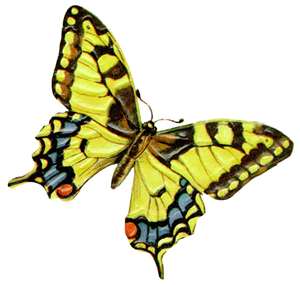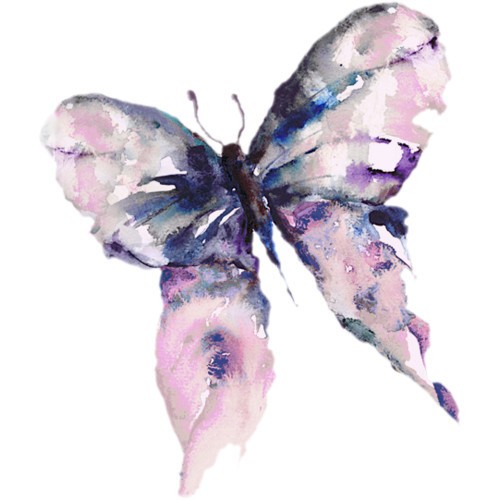Dance Like the Butterfly
By Trish Phillips
For many, the beginning of the New Year signals a sense of transformation – a time to evaluate life in its current state and set goals for manifesting change. The butterfly symbolizes transformation and joy. Its dance reflects the need for movement from where we are to our next phase of being.
History
In early Christianity, the butterfly was a symbol of the soul. In China, it was used as a symbol of conjugal bliss and joy. The butterfly was particularly revered by the tribes of the American southwest. Its dance is performed by both Navajo and Hopis. In the Hopi tradition, unmarried girls of the butterfly clan wore their hair in the shape of butterfly wings to advertise their availability. To Native Americans, the butterfly is a symbol of change, joy and color. The exquisite butterfly was considered a miracle of transformation and resurrection.
 In the Old World, the connotation was negative; the butterfly was thought to be the spirit of the dead. In Gnostic art, the angel of death is depicted crushing a butterfly underfoot. Its attraction to flame and light symbolize purification by fire. Sailors who saw a butterfly prior to embarkation believed that they would die at sea. In some areas of England, it is thought that butterflies contain the souls of children who have come back to life. Elsewhere in England, a person is supposed to kill the first butterfly they see or face a year of bad luck; if that first butterfly in spring is yellow, sickness is in store for the entire family. Only in Scotland and Ireland does the appearance of a golden butterfly signify something good – it is believed that a golden butterfly near the dead ensures the soul’s place in heaven.
In the Old World, the connotation was negative; the butterfly was thought to be the spirit of the dead. In Gnostic art, the angel of death is depicted crushing a butterfly underfoot. Its attraction to flame and light symbolize purification by fire. Sailors who saw a butterfly prior to embarkation believed that they would die at sea. In some areas of England, it is thought that butterflies contain the souls of children who have come back to life. Elsewhere in England, a person is supposed to kill the first butterfly they see or face a year of bad luck; if that first butterfly in spring is yellow, sickness is in store for the entire family. Only in Scotland and Ireland does the appearance of a golden butterfly signify something good – it is believed that a golden butterfly near the dead ensures the soul’s place in heaven.
Biological Characteristics
Many who read this next statement will cringe since few things evoke as strong an emotional response in humans as insects do… but butterflies are insects. Consider however, that insects succeed as a group because of six primary qualities:
- Their ability to fly enables them to spread.
- They are extremely adaptable to their environment and climatic conditions.
- Their external skeleton provides a kind of armor of self-protection.
- Their small size keeps their demands meager and accessible.
- The ability to delay fertilization until conditions are beneficial enables their species to survive.
- They undergo multiple changes (metamorphosis) to facilitate and carry on life.
All of these traits can be viewed symbolically as ideas to assist humans to be more successful within their own lives. While we cannot fly, we can ensure that we don’t get stuck in what is too comfortable. We don’t have exoskeletons, but we can develop sensitivity to the energies around us and strengthen ourselves to be less victimized by those energies. We can be less wasteful in our lives and keep our demands small. We can build and do a little at a time so that it becomes great over time instead of trying to accomplish all at once. Probably most importantly, metamorphosis is inevitable… and life becomes more difficult on many levels when we resist its natural flow.
 Metamorphosis is the magic that insects can teach us. Change ensures growth. We have to shed the old before we can come into the new. We give birth to ideas, activities, or qualities. Ideas and creativity need to be shaped, formed, developed and honed. After this is accomplished, the new foundation is laid. Sometimes, we need to back off and go deeply within after laying a foundation so that creation will be able to come forth strong and in a new light. Just as the adult butterfly only emerges when conditions are right, our ideas and activities will only flourish on a higher level when conditions are right. That is the force of creation – the only constant is that we are always changing.
Metamorphosis is the magic that insects can teach us. Change ensures growth. We have to shed the old before we can come into the new. We give birth to ideas, activities, or qualities. Ideas and creativity need to be shaped, formed, developed and honed. After this is accomplished, the new foundation is laid. Sometimes, we need to back off and go deeply within after laying a foundation so that creation will be able to come forth strong and in a new light. Just as the adult butterfly only emerges when conditions are right, our ideas and activities will only flourish on a higher level when conditions are right. That is the force of creation – the only constant is that we are always changing.
Symbolism and Power
Butterfly is the power of air, the ability to float upon a breeze. It is known for its darting flight; thus, it represents the mind and our ability to change it when necessary. Butterfly represents the never-ending cycle of life; therefore, its medicine bestows not only the ability, but the clarity of mind needed before self-transformation.
 Butterflies appear to dance as they flitter among the flowers. They remind us not to take things so seriously within our lives. They awaken a sense of lightness and joy. They remind us to get up and move, for if you do not move, you cannot dance.
Butterflies appear to dance as they flitter among the flowers. They remind us not to take things so seriously within our lives. They awaken a sense of lightness and joy. They remind us to get up and move, for if you do not move, you cannot dance.
Butterflies bring color and joy with them. The colors of the butterfly should be examined for significance and to help you understand its role within your life. Look at how much or little joy is in your life. Lighten up. Look for change. Make changes when the opportunities present themselves. The butterfly will teach you that growth and change do not have to be traumatic. Change can occur as gently and as joyfully as one wishes.
The Lesson
The lesson of the butterfly is letting go of old behavior and expounding into the next phase of existence. Each of us transforms through multiple stages in our life. It is only through exertion that we emerge into who we will be next. Ask for butterfly help when:
- You need help organizing a project or detailing the sequence of steps to complete it.
- You know it is time for a change and need the courage to break free from your “cocoon.”
- You are experiencing a major life change.
- You take things too seriously.
Access butterfly power by…
- Noticing colors you are drawn to and trying to discern what they mean for you.
- Choosing a habit you no longer want, developing and implementing a plan to change it.
- Observing butterflies in their natural environment (a park or preserve) and noting what you are thinking when one comes into view.
- Wrapping yourself tightly in a blanket for a few minutes and then slowly unwrapping it and emerge. Does this seem like a metaphor for anything in your life right now?
- Dance! Alone or with someone, release the energy to propel you forward.
References:
Power Animals: How to Connect with Your Animal Spirit Guide, Steven D. Farmer, Ph.D., pp. 55-59.
Animal Wisdom: the definitive guide, Jessica Dawn Palmer, pp. 63-66.
Animal-Speak: The Spiritual & Magical Powers of Creatures Great & Small, Ted Andrews, pp. 339-340.

